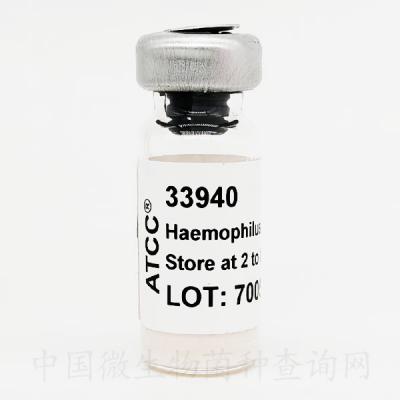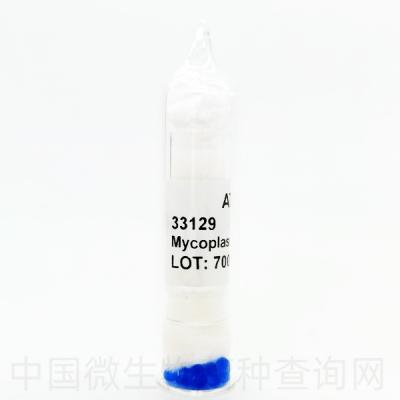
-
平臺編號:bio-85567
-
國際編號:ATCC HTB-66
-
拉丁屬名: RPMI-7951
-
規(guī)格:frozen
-
用途:ATCC原裝進(jìn)口
-
服務(wù)費(fèi)用:
加載中…… - 訂購
-
注意事項:僅用于科學(xué)研究或者工業(yè)應(yīng)用等非醫(yī)療目的不可用于人類或動物的臨床診斷或治療,非藥用,非食用(產(chǎn)品信息以出庫為準(zhǔn))
RPMI-7951
RPMI-7951 拉丁名
(ATCC® HTB-66™) 統(tǒng)一編號
Organism Homo sapiens, human
Tissue skin; derived from metastatic site: lymph node
Product Format 提供形式 frozen
Morphology epithelial Culture Properties adherent
Biosafety Level 生物安全等級 1
Biosafety classification is based on U.S. Public Health Service Guidelines, it is the responsibility of the customer to ensure that their facilities comply with biosafety regulations for their own country.
Disease malignant melanoma
Age 18 years Gender female Ethnicity Caucasian
Storage Conditions 保存方法 liquid nitrogen vapor phaseKaryotype modal number= 49; range = 47 to 66.
This is a hyperdiploid human cell line with the modal chromosome number of 49, occurring in 24% of cells. Polyploid cells occurred at 22%, which is high.
Seven marker chromosomes were common to most cells, including t(10p14q); t(15q17p), t(Xp8p), del(17) (p13.1) and three others. Five others occurred only in some cells.
Normal X chromosomes were absent. N14, N17 and N22 were mostly single-copied and N2 had three copies.
Fluorescence examination did not show the presence of any Y-like chromosome.
Clinical Data 18 years
Caucasian female
Antigen Expression Antigen expression: Blood Type A; Rh+
Genes Expressed Blood Type A; Rh+ Tumorigenic Yes
Effects Yes, in nude mice; forms pigmented melanoma
Comments 注釋 A contaminant identified as Mycoplasma fermentans was eliminated in 1975.
Complete Growth Medium The base medium for this cell line is ATCC-formulated Eagle's Minimum Essential Medium, Catalog No. 30-2003.
To make the complete growth medium, add the following components to the base medium: fetal bovine serum to a final concentration of 10%.
Subculturing Remove and discard culture medium. Briefly rinse the cell layer with 0.25% (w/v) Trypsin- 0.53 mM EDTA solution to remove all traces of serum that contains trypsin inhibitor.
Add 2.0 to 3.0 mL of Trypsin-EDTA solution to flask and observe cells under an inverted microscope until cell layer is dispersed (usually within 5 to 15 minutes).
Note: To avoid clumping do not agitate the cells by hitting or shaking the flask while waiting for the cells to detach. Cells that are difficult to detach may be placed at 37°C to facilitate dispersal.
Add 6.0 to 8.0 mL of complete growth medium and aspirate cells by gently pipetting.
Add appropriate aliquots of the cell suspension to new culture vessels.
Incubate cultures at 37°C.
Subcultivation Ratio: A subcultivation ratio of 1:2 to 1:4 is recommended Medium Renewal: Two to three times weekly
Cryopreservation Freeze medium: Complete growth medium supplemented with 5% (v/v) DMSO
Storage temperature 保藏溫度 : liquid nitrogen vapor phase
Culture Conditions 培養(yǎng)條件
Atmosphere 需氧情況 : air, 95%; carbon dioxide (CO2), 5%
Temperature 培養(yǎng)溫度 : 37°C
STR Profile Amelogenin: X
CSF1PO: 12
D13S317: 11,12
D16S539: 11,12
D5S818: 11
D7S820: 11,12
THO1: 9,9.3
TPOX: 8
vWA: 17,19
Isoenzymes AK-1,
1 ES-D, 1
G6PD, B
GLO-I, 1
PGM1, 1-2
PGM3, 1
Name of Depositor 寄存人 G Moore
Deposited As Homo sapiens
Year of Origin 1971
References 參考文獻(xiàn) Fogh J, et al. Absence of HeLa cell contamination in 169 cell lines derived from human tumors. J. Natl. Cancer Inst. 58: 209-214, 1977. PubMed: 833871
J. Natl. Cancer Inst. 59: 301-307, 1977.
Santoro IM, Groden J. Alternative splicing of the APC gene and its association with terminal differentiation. Cancer Res. 57: 488-494, 1997. PubMed: 9012479
References Fogh J, et al. Absence of HeLa cell contamination in 169 cell lines derived from human tumors. J. Natl. Cancer Inst. 58: 209-214, 1977. PubMed: 833871
J. Natl. Cancer Inst. 59: 301-307, 1977.
Santoro IM, Groden J. Alternative splicing of the APC gene and its association with terminal differentiation. Cancer Res. 57: 488-494, 1997. PubMed: 9012479





